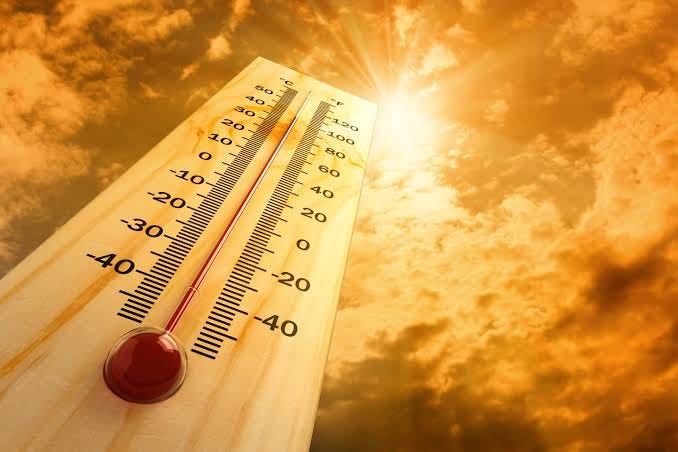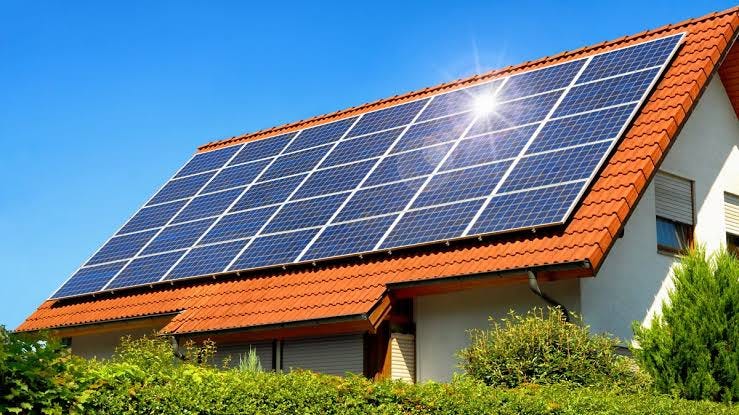Heat in America, Heat in in Europe, Heat in Africa: it's a Tale of Heat Everywhere
As 98% of humanity got exposed to global warming this this summer
Credit, Royal Meteorological Society
Vietnam recorded its highest ever temperature of 44.2 degrees Celsius in May, while temperatures in Thailand remained above 40 degrees Celsius in many northern and central regions in the same month, just as Laos got its hottest day in history till then at 43.4 degrees Celsius.
The United States continued with the trend of extreme weather this week, as more than 60 million Americans became affected with heat alerts, and as much as 15 million people expected to experience dangerous heat on September 12, as the record-shattering heat proves devastating in some of the nation's largest cites.
In South America, record temperatures of almost 42 degrees Celsius affected Brazil, despite still being in winter, while Chile experienced a winter heatwave of temperatures soaring to 37 degrees Celsius, just as extreme weather and climate shocks turned acute in Latin America and the Caribbean, with the long-time warning trend and sea level rise accelerating.
With nations as diverse as Vietnam, the United Stares, and Brazil hitting their highest-ever temperatures in the last few months, and North America, South America, Asia, and others affected, a new research can't be wrong, when it found that close to 98 percent of the world's population got exposed to global warming this summer.
As of late August, 48,831 wild fires burned in the United States, destroying 1.96 million acres, and even though this figure fell below the 10-year average of 40,512 fires for the 2013-2022 and the average of 5.06 million acres, it still represented a very high figure.
Twenty-one thousand, seven hundred and eighty-one wildfires scorched France as of this month for the present year, a higher number than 13,153.18 fires for the 2006-2022 average, while Turkey got 15,175 wildfires, Romania 15,241, and the United Kingdom 8,697 wildfires.
Algeria burned with wildfires also, as climate change-fuelled event swept across regions of the North African country, killing at least 32 people in July, while the tragedy did not spare Tunisia, where wildfires spread from the mountain areas.
The wildfires illustrate why it's dangerous for the world to continue experiencing rising temperatures going forwards, because they could worsen in time, leading to the deaths of many people, the destruction to property, and nations suffering from reduced productivity, particularly if global warming reaches 1.5 degrees Celsius above pre-industrial times in the next 10 to 20 years.
Experts predict a global rise in extreme wildfires of up to 14 percent by 2030, 30 percent by the end of 2050, and 50 percent by the end of the century, as climate change and land use changes make wildfires more violent and destructive.
Scientist expect global warming to hit 1.5 degrees Celsius by 2030, with the most vulnerable areas to include South Asia, the Persian Gulf, and the Red Sea.
At 1.5 degrees Celsius rise, scientists envision a situation where about 14 percent of earth's population will be exposed to severe heatwaves at least once every five years, while at two degrees warming rise that number jumps to 37 percent, as extreme heatwaves become numerous with 1.5 degrees Celsius increase from pre-industrial levels.
Under this scenario it becomes possible to speculate a situation whereby more than 98 percent of the world's population could get exposed to the severe conditions from the world experiencing more increases above pre-industrial levels, if 98 percent got affected by global warming this summer.
Also, it becomes plausible to say only less than two percent of the world's population could be spared of the effects of the world hitting 1.5 degrees Celsius above pre-industrial levels in the near future, as wildfires, sea level rises, biodiversity loss, and other vicissitudes occur on an increasingly interconnected planet.
As usual, the consumption of fossil fuel lies behind the rise in global wildfires. It lies behind the high temperatures. It lies behind the sea level rises. It lies behind the global warming. To slow down the global warming, people should cut down the consumption of fossil fuel products all over the world.
Five top climate tech products
Credit, CNET
Please note that the landscape of climate tech is constantly evolving. Here are a few examples of top climate products:
Solar Panels: Solar technology continues to advance, with more efficient and affordable solar panels becoming available. Innovations in solar power include flexible and transparent solar panels. The global solar was estimated at USD 160.3 billion and is estimated to reach USD 189.5 billion in 2022.
Electric Vehicles (EVs): Electric cars, like those from Tesla, are still gaining traction. The EV market has seen continued growth, with various automakers offering electric models with longer ranges and faster charging capabilities. Revenue in the Electric Vehicles market is projected to reach US$561.3bn in 2023. Revenue is expected to show an annual growth rate (CAGR 2023-2028) of 10.07%, resulting in a projected market volume of US$906.7bn by 2028.
Energy Storage: Battery technology, particularly lithium-ion batteries, are advancing. Companies like Tesla and LG Chem are producing high-capacity batteries for energy storage, which is crucial for storing renewable energy. The battery energy storage market could reach USD 31.20 billion by 2029.
Smart Thermostats: Smart thermostats like the Nest Learning Thermostat are helping homeowners reduce energy consumption by learning their preferences and optimizing heating and cooling. The global Smart Thermostats market size is projected to reach USD 29540 million by 2026, from USD 13110 million in 2020, at a CAGR of 14.5 during 2021-2026.
Wind Turbines: Wind energy technology is improving with larger and more efficient wind turbines. Offshore wind farms are also gaining popularity. The global wind turbine market size was valued at $53.4 billion in 2020, and is projected to reach $98.4 billion by 2030, growing at a CAGR of 6.3% from 2020 to 2030.
What to Eat
Algerian vegan food, Credit, Keesha’s Kitchen







I fear the heating feedback loop we've created will hasten the mass extinction of species to be much faster than we expect, and yet one half of the US insists on keeping their heads buried in the sand. The ever heating sands.
Btw, it would be great if you'd link those food pics to recipes. I'd love to try most of those dishes.
But Excellent in-depth reporting none the less!
One interesting thing about EVs: we could see a really dramatic improvement due to compounding, if the battery technology continues to improve over time. This could be a sort of virtuous cycle, doubling the positive effects of EVs. Right now, they're not all that much better than ICE cars, but they're getting better all the time.